
PART

BEFORE YOU SHOP
Note: The mention of brand names in the text and the appearance of products in the photographs do not constitute endorsements.
1 READING AND
PRONOUNCING JAPANESE
Some portions of food labels in Japan may be written in the Roman alphabet, called rmaji in Japanese, but most labels are written in the Japanese writing system, which is composed of Chinese characters, or kanji, and two syllabaries, hiragana and katakana.
KANJI
The oldest form of Japanese writing came to Japan from China. An individual Chinese character is called a kanji ; this term is also used for characters collectively. What distinguishes kanji from most other writing systems is that the characters represent meaning as well as sound. Each character was originally derived from a picture representing an object or a concept, but over the centuries the characters became much more abstract and abbreviated.
In Japanese, there are usually several possible pronunciations, or readings, for a given character. For example, the character  can be read kome, mai, or bei. Some readings of a character are used when it appears alone:
can be read kome, mai, or bei. Some readings of a character are used when it appears alone:  alone is read kome and means "(uncooked) rice." Other readings are generally used in compound words: mai and bei are found in, for example,
alone is read kome and means "(uncooked) rice." Other readings are generally used in compound words: mai and bei are found in, for example,  gemmai, "brown (unrefined) rice," and
gemmai, "brown (unrefined) rice," and  beika, "the price of rice." (To complicate matters, the reading kome may be used in certain compounds as well.) Among words containing a given character, the correct reading of that character in each word must be memorized.
beika, "the price of rice." (To complicate matters, the reading kome may be used in certain compounds as well.) Among words containing a given character, the correct reading of that character in each word must be memorized.
A single character can represent a word of one syllable (  su, vinegar) or several syllables (
su, vinegar) or several syllables (  sakana, fish). Since kanji represent concepts, one can often guess the meaning of a word if one knows the meaning of the kanji that make it up, even if the pronunciations to be used in the particular case are not known.
sakana, fish). Since kanji represent concepts, one can often guess the meaning of a word if one knows the meaning of the kanji that make it up, even if the pronunciations to be used in the particular case are not known.
For the person who does not read kanji and does not know whether one character represents a word or a partial word, it is important to know that on food labels, individual words are separated from one another by a diagonal slash, a raised dot, or a space. This method is used in particular in the space for the list of ingredients.

Note: For each syllable, the hiragana appears on the left, the katakana on the right.
The following combinations are found in words of foreign origin only: 
KANA
Hiragana and katakana, referred to collectively as kana, are symbols that represent the sound of a single syllable (e.g., a, ka, kya). In this respect, kana differ from the letters of the alphabet, each of which generally represents a single sound. Unlike kanji, kana have no meaning in themselves. There are forty-six symbols in each syllabary; these are shown in the upper left section of Table 1 below. As shown in the bottom half of the Table, the symbol "written to the upper right of a kana symbol "converts" a voiceless consonant to a voiced one (e.g., k to g), and the symbol in the same position "converts" an h-sound to a p-sound. When the small symbols  , and
, and  are written immediately after a regular-sized symbol (right side of the Table), the two sounds represented by the symbols are blended into a single syllable.
are written immediately after a regular-sized symbol (right side of the Table), the two sounds represented by the symbols are blended into a single syllable.
The form of each kana symbol is much simpler than that of most kanji. Hiragana are rounded and curved, while katakana are angular. With experience, one can easily distinguish between the two syllabaries themselves and between each syllabary and kanji.
Because kana represent sound only, it is possible to sound out a word written in one of the syllabaries and then refer to a Japanese-English dictionary in which the entry words are romanized. Japanese-English dictionaries in which the entry words are in kana also exist; in fact, these are more common than romanized dictionaries.
Any word written in kanji can be written out in kana (for example, the words related to rice on page 13 may be written as follows: kome,  gemmai,
gemmai, 
 beika,
beika,  . However, the kanji and the syllabaries have separate functions.
. However, the kanji and the syllabaries have separate functions.
Kanji are used to represent nouns, verbs, and adjectives. Hiragana have various functions, but with respect to food labels, this syllabary is used to write words native to the Japanese language for which no kanji exists or for which the kanji is considered outmoded or too difficult. Even when a certain kanji is in current use, however, a food packager may at his discretion use hiragana to represent the word. In other words, different firms, markets, etc., are not always consistent in their use of kanji and hiragana for, say, the generic name of a certain product. A further complication is that a compound word may be written half in hiragana, half in kanji.
Katakana are used for foreign-derived words, for example,  bitamin, "vitamin." Compounds of foreign and Japanese words are written in mixed katakana-kanji (e.g.,
bitamin, "vitamin." Compounds of foreign and Japanese words are written in mixed katakana-kanji (e.g.,  , pori-bukuro, polybag); combinations of katakana and hiragana are also possible. Finally, katakana may occasionally be used instead of hiragana, often for an emphatic effect. A food label can thus appear with all three elements of the Japanese writing system, as well as an occasional word in the Roman or another alphabet.
, pori-bukuro, polybag); combinations of katakana and hiragana are also possible. Finally, katakana may occasionally be used instead of hiragana, often for an emphatic effect. A food label can thus appear with all three elements of the Japanese writing system, as well as an occasional word in the Roman or another alphabet.
ROMANIZATION AND PRONUNCIATION
Table 1 also shows the system of romanization (basically the Hepburn system) used throughout this book for the transcription of Japanese words. The following paragraphs discuss the pronunciation and romanization of Japanese, and explain in more detail the kana syllabaries, where appropriate.
The five vowels of Japanese can be pronounced as follows:
a as in "father" (not as in "apple" )
i as in "machine"
u as in "put"

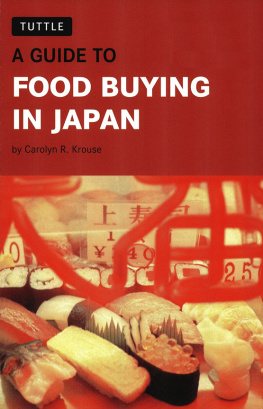
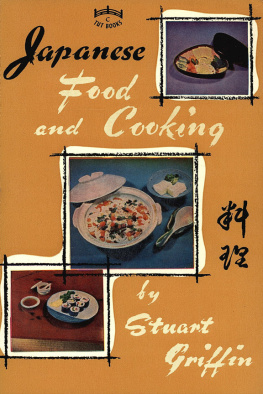
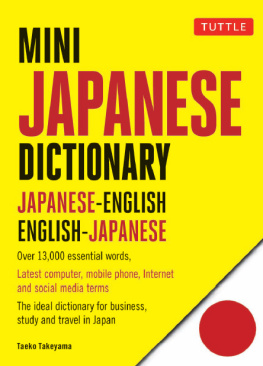
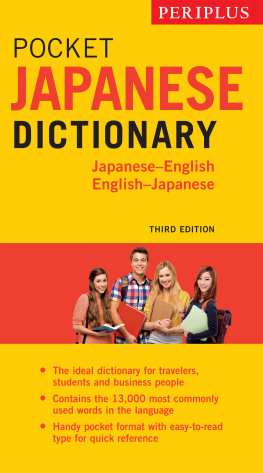

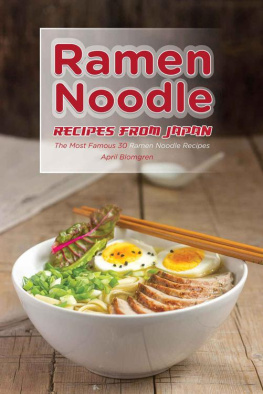
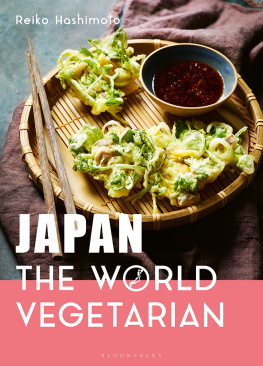

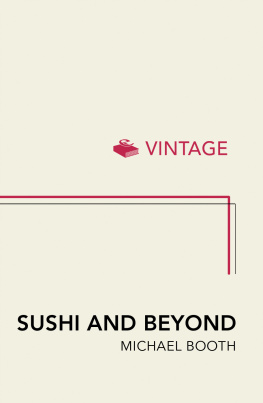
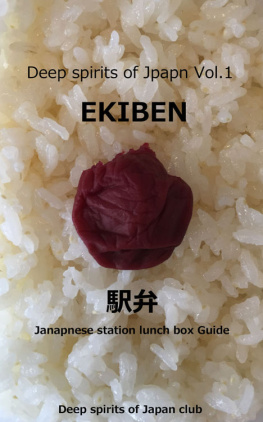
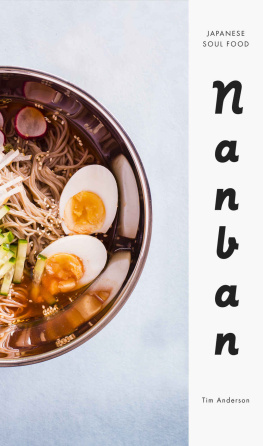



 can be read kome, mai, or bei. Some readings of a character are used when it appears alone:
can be read kome, mai, or bei. Some readings of a character are used when it appears alone:  alone is read kome and means "(uncooked) rice." Other readings are generally used in compound words: mai and bei are found in, for example,
alone is read kome and means "(uncooked) rice." Other readings are generally used in compound words: mai and bei are found in, for example,  gemmai, "brown (unrefined) rice," and
gemmai, "brown (unrefined) rice," and  beika, "the price of rice." (To complicate matters, the reading kome may be used in certain compounds as well.) Among words containing a given character, the correct reading of that character in each word must be memorized.
beika, "the price of rice." (To complicate matters, the reading kome may be used in certain compounds as well.) Among words containing a given character, the correct reading of that character in each word must be memorized. su, vinegar) or several syllables (
su, vinegar) or several syllables (  sakana, fish). Since kanji represent concepts, one can often guess the meaning of a word if one knows the meaning of the kanji that make it up, even if the pronunciations to be used in the particular case are not known.
sakana, fish). Since kanji represent concepts, one can often guess the meaning of a word if one knows the meaning of the kanji that make it up, even if the pronunciations to be used in the particular case are not known.

 , and
, and  are written immediately after a regular-sized symbol (right side of the Table), the two sounds represented by the symbols are blended into a single syllable.
are written immediately after a regular-sized symbol (right side of the Table), the two sounds represented by the symbols are blended into a single syllable. gemmai,
gemmai, 
 beika,
beika,  . However, the kanji and the syllabaries have separate functions.
. However, the kanji and the syllabaries have separate functions. bitamin, "vitamin." Compounds of foreign and Japanese words are written in mixed katakana-kanji (e.g.,
bitamin, "vitamin." Compounds of foreign and Japanese words are written in mixed katakana-kanji (e.g.,  , pori-bukuro, polybag); combinations of katakana and hiragana are also possible. Finally, katakana may occasionally be used instead of hiragana, often for an emphatic effect. A food label can thus appear with all three elements of the Japanese writing system, as well as an occasional word in the Roman or another alphabet.
, pori-bukuro, polybag); combinations of katakana and hiragana are also possible. Finally, katakana may occasionally be used instead of hiragana, often for an emphatic effect. A food label can thus appear with all three elements of the Japanese writing system, as well as an occasional word in the Roman or another alphabet.